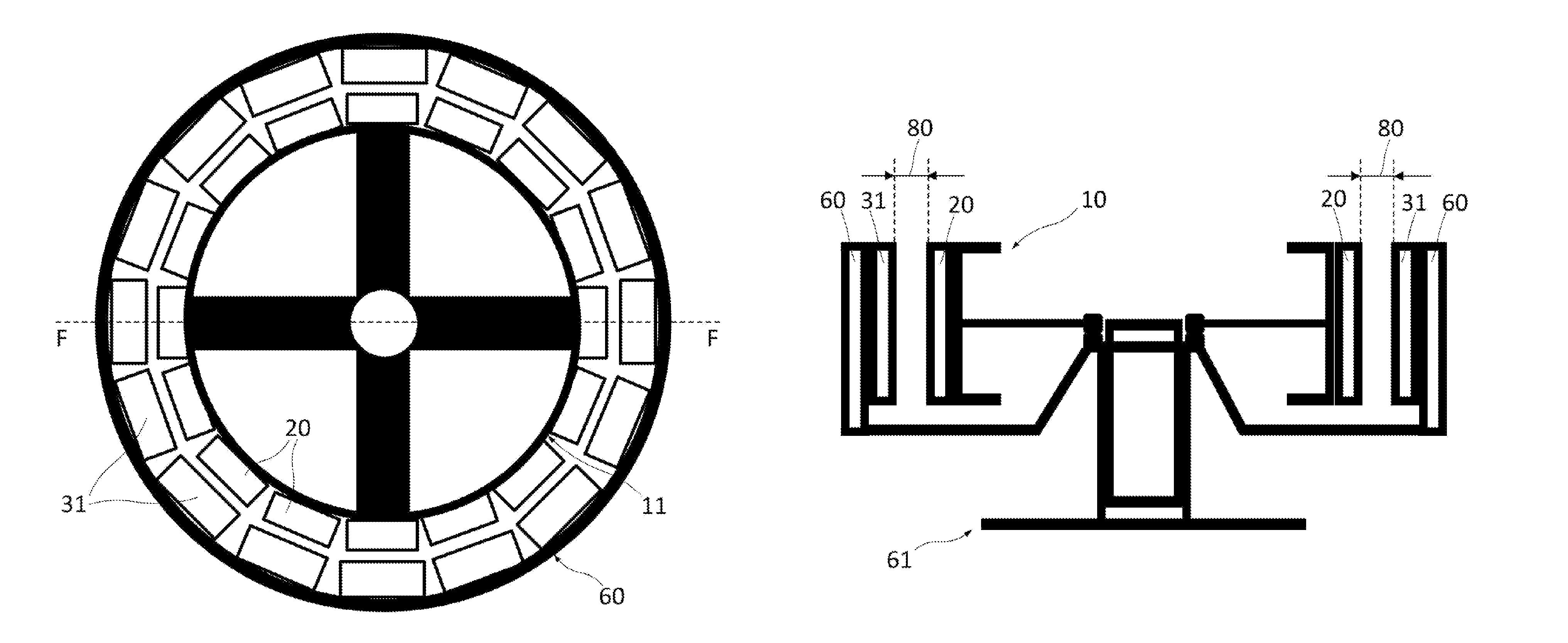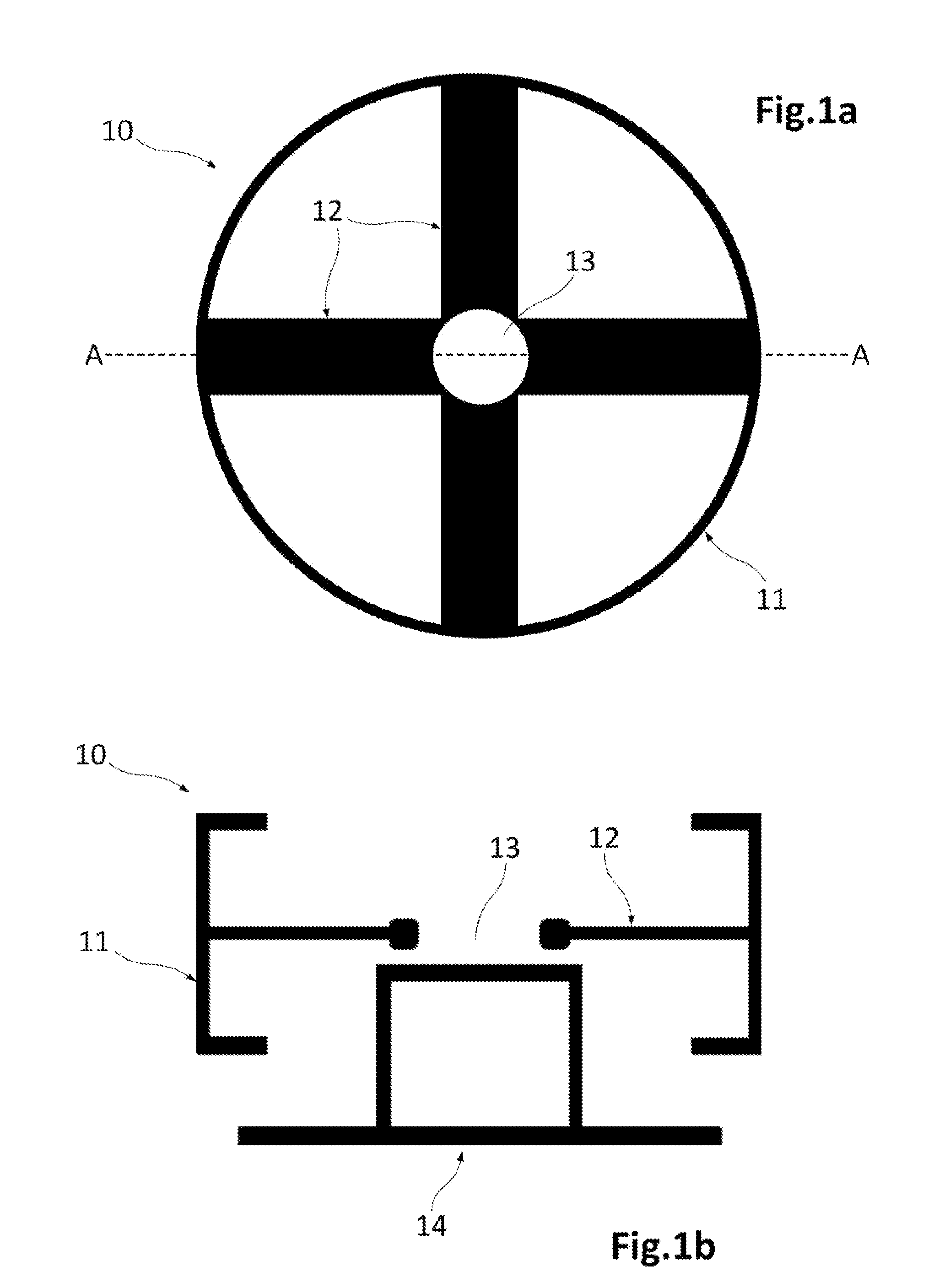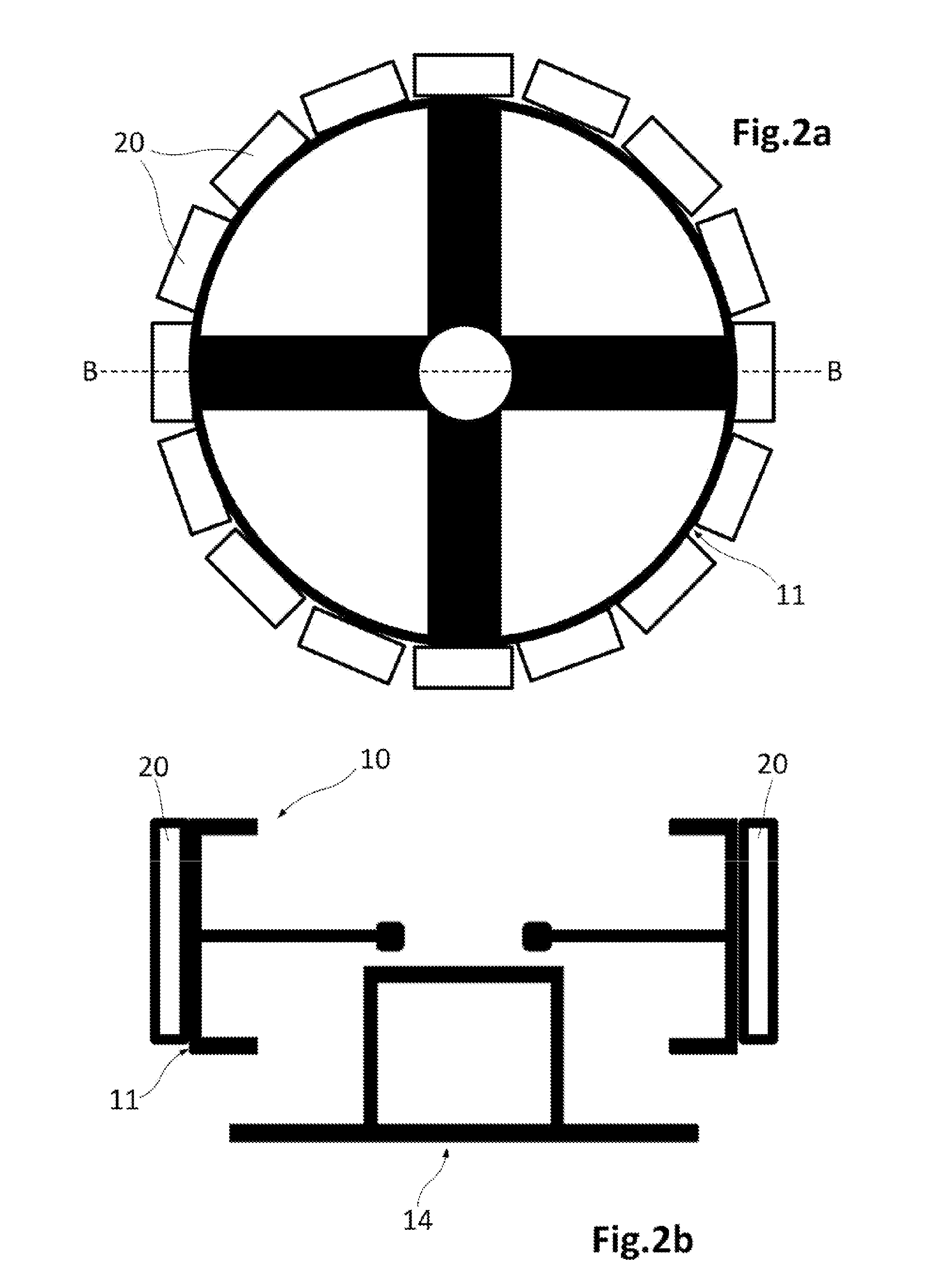Methods of assembling an electrical machine
a technology of electrical machines and components, applied in the direction of windings, synchronous machines with stationary armatures, rotating magnets, etc., can solve the problems of high magnetic forces trying to increase eccentricity, complicated stator structure, and general requirement of expensive and voluminous tooling, so as to facilitate the assembly of the rotor or stator
- Summary
- Abstract
- Description
- Claims
- Application Information
AI Technical Summary
Benefits of technology
Problems solved by technology
Method used
Image
Examples
Embodiment Construction
[0039]FIGS. 1a to 8b will be used for describing examples of methods of assembling an electrical machine such as e.g. a generator.
[0040]FIGS. 1a and 1b schematically illustrate an example of rotor structure 10 which has been mounted on a supporting structure 14 such as e.g. a pedestal. FIG. 1a shows the rotor structure 10 which in this example has a rotor rim 11, spokes 12 and a central opening 13 for its coupling with a rotor shaft or with one or more bearings (not shown) depending on the configuration chosen. FIG. 1b is a schematic representation of a cross sectional view of the rotor structure 10 mounted on the pedestal 14 according to a plane AA indicated in FIG. 1a.
[0041]Once the rotor structure 10 is mounted on the pedestal 14, an arrangement as the one shown in FIGS. 2a and 2b can be obtained. This arrangement may result from attaching a plurality of permanent magnet elements 20 to the rim 11 of the rotor structure 10. FIG. 2a is a schematic illustration of a top view of the...
PUM
| Property | Measurement | Unit |
|---|---|---|
| thickness | aaaaa | aaaaa |
| thickness | aaaaa | aaaaa |
| thickness | aaaaa | aaaaa |
Abstract
Description
Claims
Application Information
 Login to View More
Login to View More - R&D
- Intellectual Property
- Life Sciences
- Materials
- Tech Scout
- Unparalleled Data Quality
- Higher Quality Content
- 60% Fewer Hallucinations
Browse by: Latest US Patents, China's latest patents, Technical Efficacy Thesaurus, Application Domain, Technology Topic, Popular Technical Reports.
© 2025 PatSnap. All rights reserved.Legal|Privacy policy|Modern Slavery Act Transparency Statement|Sitemap|About US| Contact US: help@patsnap.com



